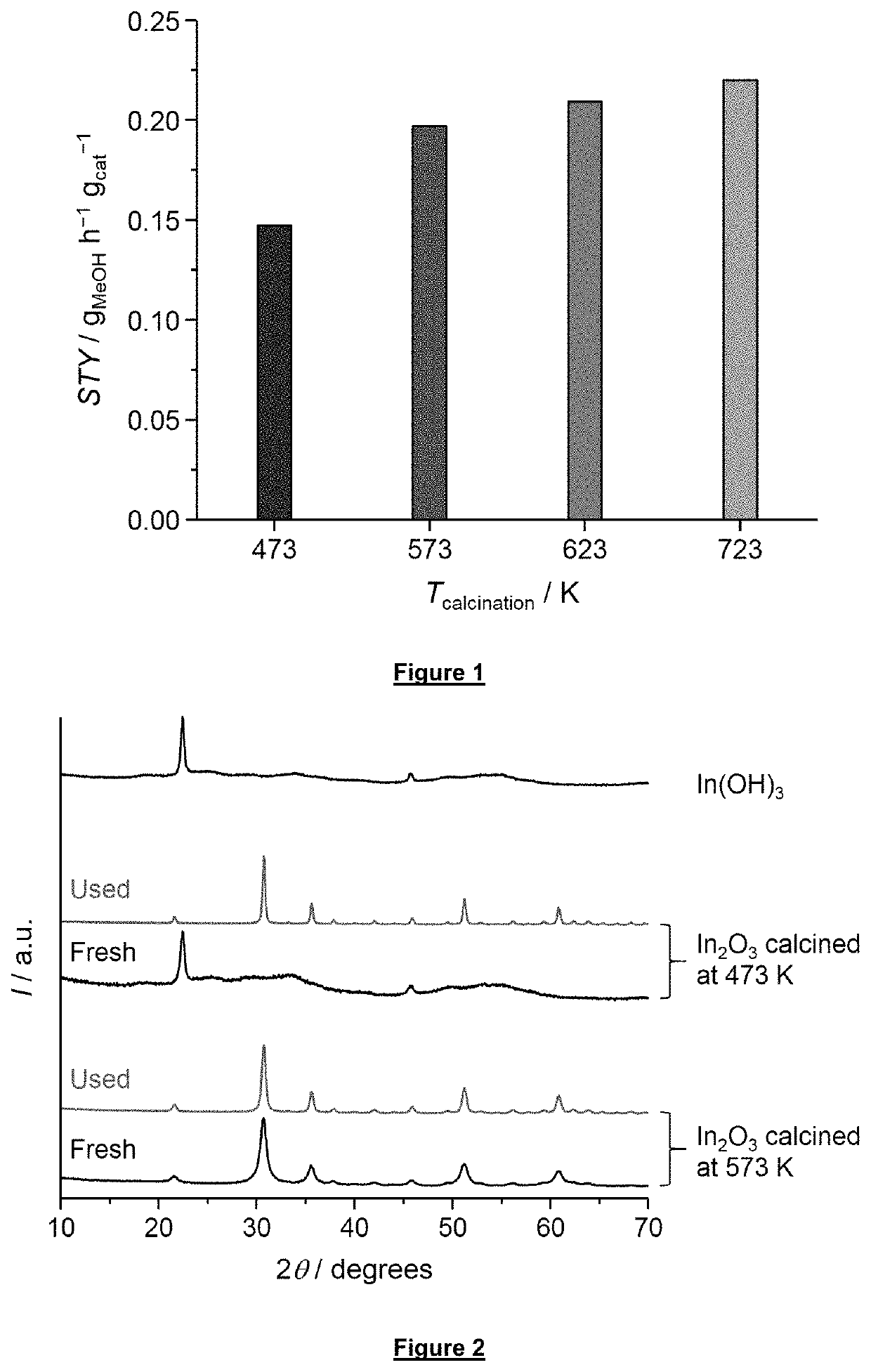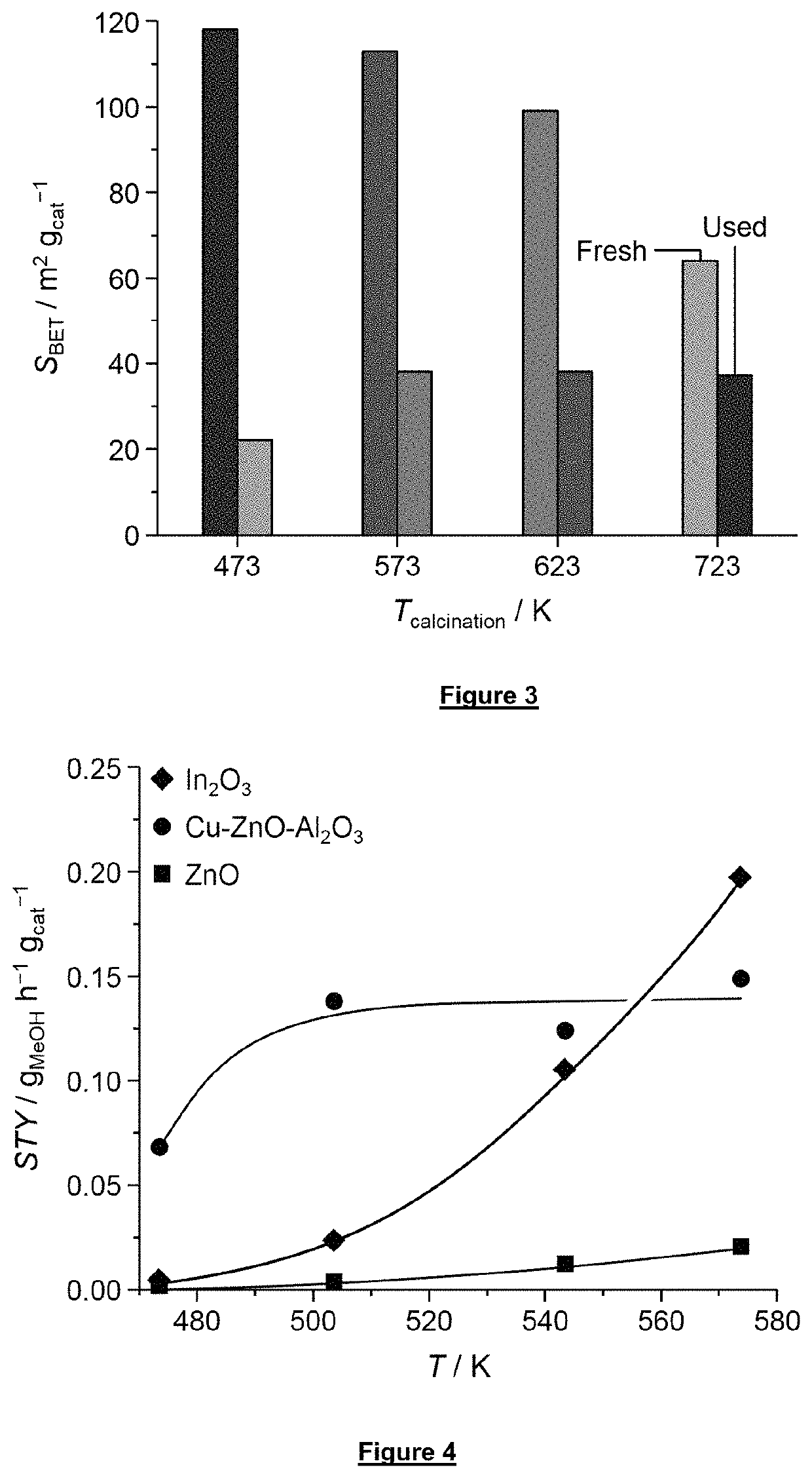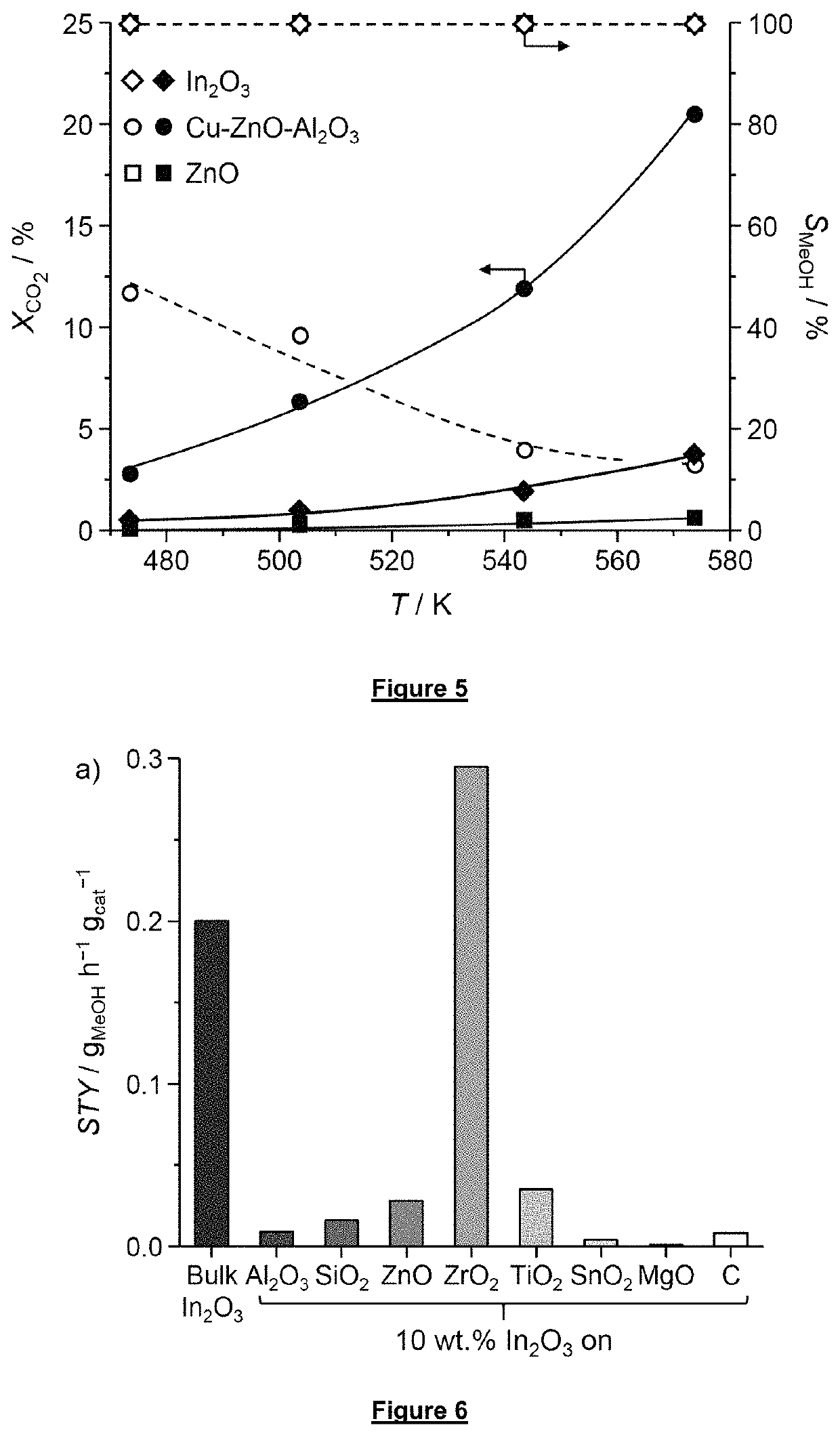Process for methanol synthesis using an indium oxide based catalyst
a technology of indium oxide and catalyst, which is applied in the direction of physical/chemical process catalyst, metal/metal-oxide/metal-hydroxide catalyst, bulk chemical production, etc., can solve the problems of limited exploitation, lack of data to evaluate the long-term stability of such catalysts, and inability to completely overcome the problems of insufficient exploitation
- Summary
- Abstract
- Description
- Claims
- Application Information
AI Technical Summary
Benefits of technology
Problems solved by technology
Method used
Image
Examples
example 3
the Reaction Temperature in Methanol Synthesis on the Catalyst Activity
[0139]The activity of the following catalysts in methanol synthesis at different temperatures was tested:[0140]a—Cu—ZnO—Al2O3 [0141]b—In2O3 [0142]c— ZnO
[0143]In2O3 and ZnO were prepared through calcination of In(OH)3 and Zn(OH)2 obtained by precipitation. The latter comprised the dissolution of 6.1 g of In(NO3)3·xH2O (Alfa Aesar, 99.99%) or 4.7 g of Zn(NO3)2.6H2O (Acros Organics, 98%) in a mixture of deionized water (24 cm3) and ethanol (Sigma-Aldrich, 99.8%, 70 cm3), followed by the addition of a solution containing the precipitating agent, i.e., 18 cm3 of 25 wt. % NH4OH (aq, Sigma-Aldrich) in 54 cm3 of ethanol. The obtained slurry was aged for 10 min at 353 K, filtered, and washed with 2 L of deionized water. The precipitate was dried at 338 K for 12 h prior to calcination in static air at 573 (heating rate: 5 K min−1) for 3 h.
[0144]The Cu—ZnO—Al2O3 catalyst was synthesized via coprecipitation mixing under vigo...
example 5
of the Interaction with the Support
[0148]The effect of several materials as support for the indium oxide catalyst have been tested. Results are given in FIG. 6. Reaction conditions: T=573 K, P=5 MPa, GHSV=21,000 h−1, molar H2:CO2=4:1. Although the reaction rates per grams of In2O3 contained in the supported catalysts are improved in case of using ZnO, TiO2 (25 wt % rutile-75 wt % anatase), or ZrO2 as catalyst support with respect to the bulk catalyst In2O3, only the ZrO2-supported In2O3 catalyst also provides a sufficient space-time yield which even exceeds the one of the bulk In2O3 catalyst by 50% (FIG. 6). In view of the low or complete inactivity of all other supports for methanol synthesis, this result demonstrates a strong synergistic effect of the In2O3 catalyst and the ZrO2 catalyst support. All supports were also tested without containing In2O3 and none of them did show any activity for CO2 hydrogenation to methanol under the used reaction conditions.
[0149]The optimal loadin...
example 6
Total Pressure
[0150]FIG. 8 displays the behavior of the bulk In2O3 catalyst in CO2 hydrogenation under different total pressures. Reaction conditions: T=573 K, GHSV=21,000 h−1, molar H2:CO2=4:1. The reaction rate increases by a factor of approximately 3 when the pressure is elevated from 1 to 5 MPa.
Example 7: Effect of Molar Feed H2:CO2 Ratio
[0151]The CO2 hydrogenation activity of the bulk In2O3 catalyst was tested under different molar H2:CO2 ratios in the syngas feed stream (FIG. 9). Reaction conditions: T=573 K, P=5 MPa, GHSV=21,000 h−1. The results reveal a beneficial effect when the molar H2:CO2 ratio in the feed stream is increased from 2 to 8. Further increase of this ratio does not elevate the space-time yield.
PUM
| Property | Measurement | Unit |
|---|---|---|
| reaction temperature | aaaaa | aaaaa |
| reaction temperature | aaaaa | aaaaa |
| pressure | aaaaa | aaaaa |
Abstract
Description
Claims
Application Information
 Login to View More
Login to View More - R&D
- Intellectual Property
- Life Sciences
- Materials
- Tech Scout
- Unparalleled Data Quality
- Higher Quality Content
- 60% Fewer Hallucinations
Browse by: Latest US Patents, China's latest patents, Technical Efficacy Thesaurus, Application Domain, Technology Topic, Popular Technical Reports.
© 2025 PatSnap. All rights reserved.Legal|Privacy policy|Modern Slavery Act Transparency Statement|Sitemap|About US| Contact US: help@patsnap.com



